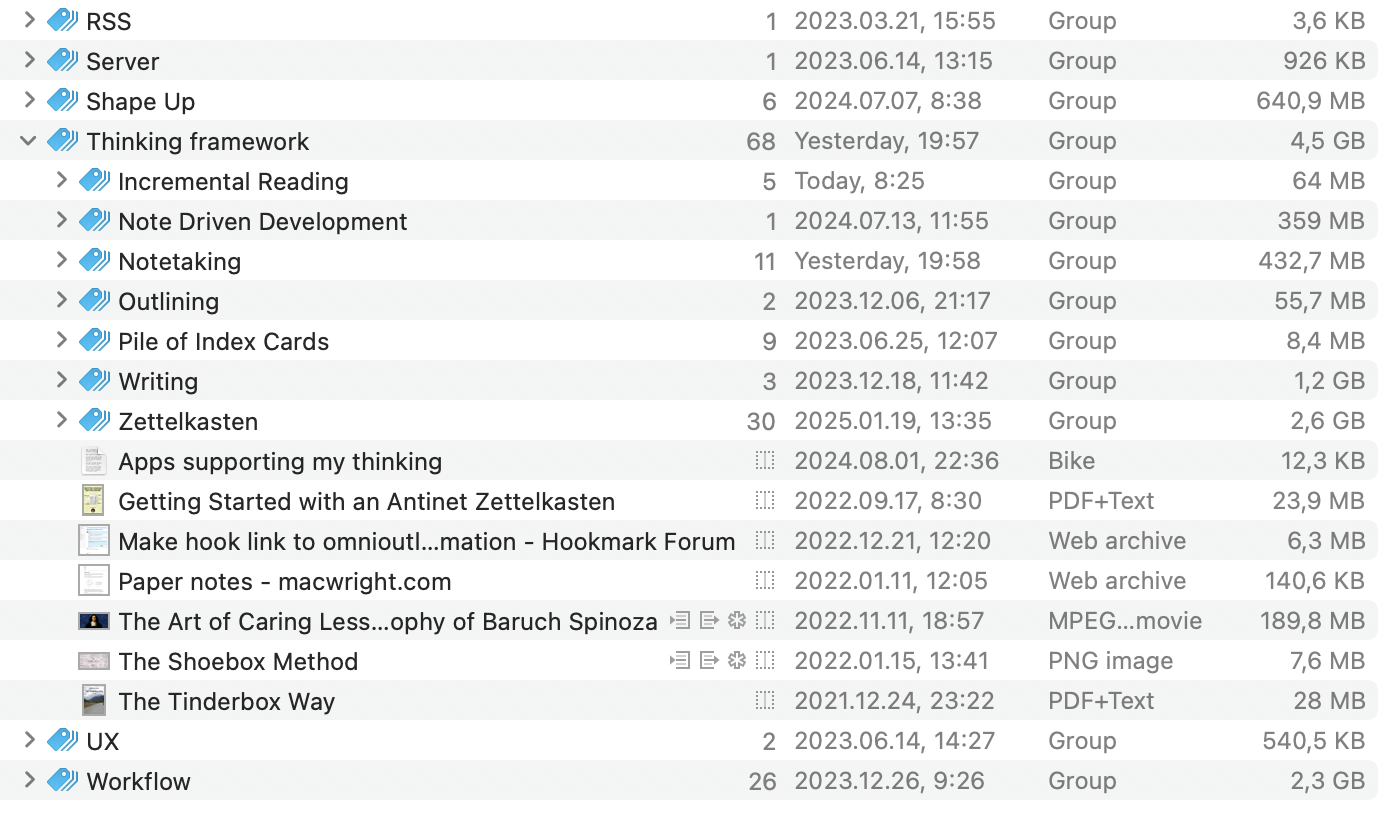Source: Literature Notes, Where do they go once they become Permanent Notes?
Highlight
Are these literature notes, engagement notes, permanent notes? Yes, all of it, probably, but it doesn’t matter. I tried to frame the process differently: start with things that look interesting, make sense of them, partition them to make them re-usable and to provide an address for each idea. (And delete what doesn’t fit. Some things I highlight in texts turn out to be unsalvageable.)
Instead of having separate reading notes and permanent notes, we should just extract out ideas.
Every idea then needs to be moved into its own atomic note.
We can then link the idea to other ideas.
That’s it.
Highlight
You are better off dividing all your stuff into two things:
There is only two types of things we encounter.
- Source material, which are articles, ideas, emails, etc…
- Text extraction, and cleaned up notes.
Highlight
Take your source material and extract ideas in an atomic way integrating them it into your Zettelkasten. The last part depends on whatever you want your Zettelkasten to be and it is up to yourself and your expertise your specific field.
So just have a source, then all notes are in a fact “permanent notes”. But they should be atomic.
So annotations like this should be processed into notes, but it is fine if we don’t make “evergreen ideas” out of them.
The only requirement is to have a place where these notes are linked into bigger ideas.
Highlight
It gets chopped up into Zettels by copy-and-pasting the marked up, condensed matter into existing and new Zettels, with sourcing added liberally.
Marking the source is important. But when I create the final export of my notes from an annotation file, I’m not sure how should I move it over to my Zettelkasten.
I should keep the original one around, and edit a new one in my ZK. It always links back to the PDF, so I can see my annotations.
So when I re-read the PDF (if that’s a thing), I can have my original ideas available.
Highlight
I can liberally follow the Collector’s Fallacy and use this process to filter out anything uninteresting over time - as from starting to read to having the source “done” can take weeks or months; some never get the slip box treatment because ideas that sounded interesting at the time of reading are irrelevant 2 weeks later.
This gives us a prefilter, since we can jot down ideas, but only the best ideas are developed into ZK notes.
Highlight
Permanent notes, which synthesize ideas from multiple sources and/or record my own thoughts, and have a References section that links back to either the lit note or its underlying source note. This is how I maintain traceability from note to source.
The best way to keep the connection to the original source, is to write more in-place in the annotations extracted from the DEVONthink PDF, then link back to this file in the references section for every note.
Backlinks would do this automatically if I extract atomic notes in place in the annotations note.
Highlight
The annotations I make on the literature note (giving my own ideas, and links to other permanent notes that are related) are what moves it along the spectrum described earlier
I can even link existing notes to these annotations.
Highlight
I do this as well! My reading inbox currently has over 100 sources in it. Is this Collector’s Fallacy? Yes, but they are sitting there waiting to be processed. Currently I’m processing maybe a half dozen or up to ten in various stages of completion. I’ll get around to the remainder eventually, or I’ll tire of them staring at me in the inbox and discard the ones that no longer interest me.
We can actually process reading items simultaneously. This means, each item can be highlighted and can be continued as we process it.
The idea is that we can simply keep up with multiple stuff this way.
Highlight
This method of note taking enables gradual digestion of multiple sources on our own schedule.
This feels pretty similar to spaced repetation. I wonder if DEVONthink can create reminders every year that adds a PDF back to my reading list to review.
Update: I checked and I can add a PDF as repeating reminder which adds it to my reading list. This makes the reading list in DEVONthink kind of next action list where I could add notes as well (annotations).
Highlight
When I used SuperMemo I was able in one case to split a long video up and process half of it over the course of an evening, and then as other priorities mounted I delayed processing the second half for two years and the incremental reading capabilities ensured I had only minimal loss of comprehension of the first half during that time.
So, the DEVONthink Reading List can be used to postpone something in the future, by setting a reminder and adding the asset back to my list.
This way, the Reading List is a project list, where I only have one next action about the project, keep reading, and when I’m done, move my ideas into my ZK.
Highlight
spaced repetition in some ways and reviewing previously taken notes
I review my ideas and notes in OmniFocus using the Synthesize perspective.
#Drafting

